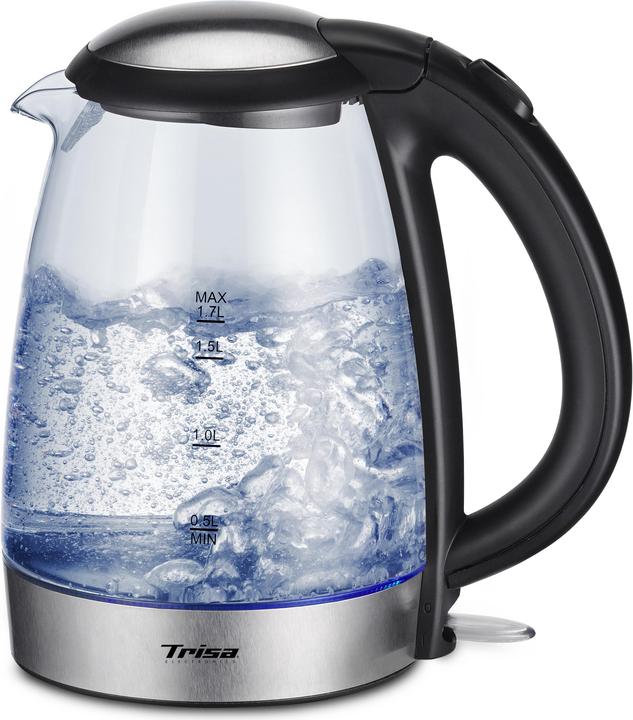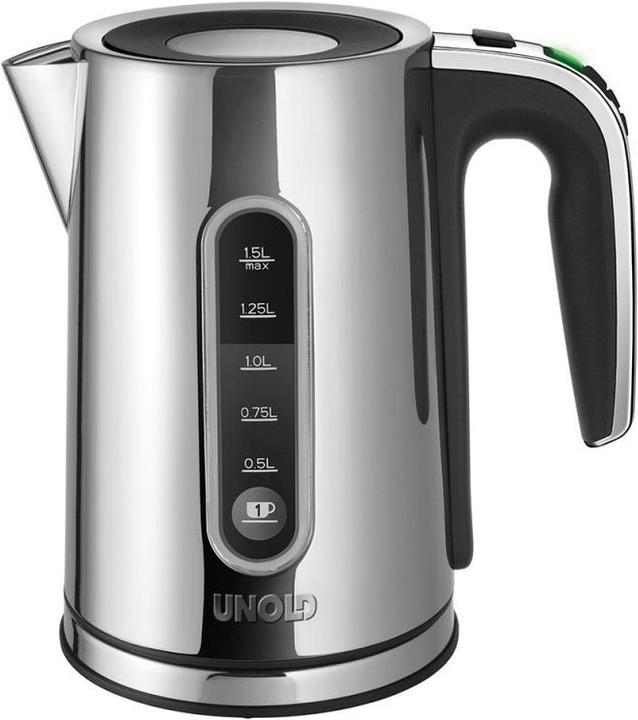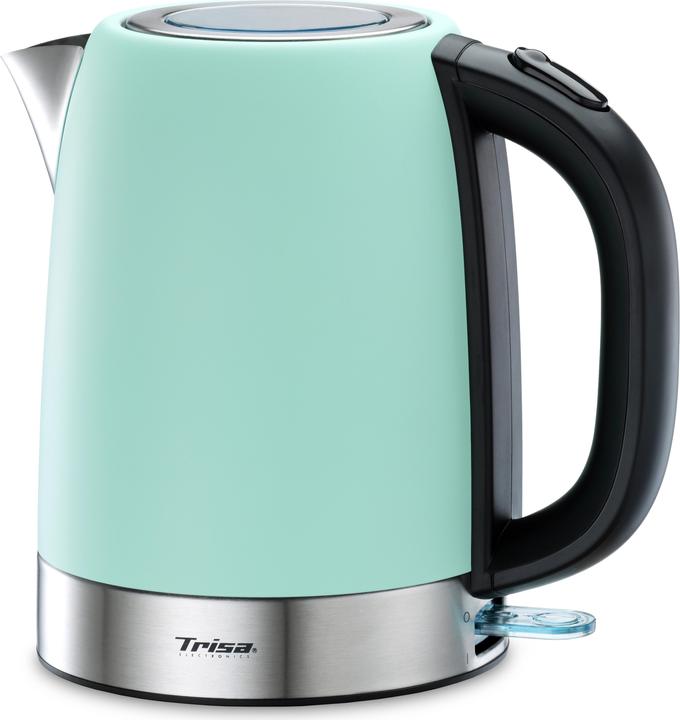

Kettle buying guide: find the right model
Not all kettles are the same - although all models have one function in common: To boil water. Find out why an electric kettle makes sense and what the most important selection criteria are to find the right appliance for your needs in our special feature.
Why do I need a kettle?
Kettles are half as energy-efficient, quicker and easier to use than pans. It boils water in an instant and saves you an enormous amount of time, as you can easily carry out other tasks while boiling water. It also saves you the hassle of washing up the pans. Despite all the advantages, descaling is still necessary from time to time. Depending on the limescale content in your municipality, this may occur more or less frequently. If the water has a high limescale content, we recommend filtering the water beforehand. Water filters can be found here.
The most important selection criteria for a kettle
Material
Apart from the price, the biggest differences are certainly in the material. The standard models are made of stainless steel or plastic. However, kettles made of glass, chrome steel or ceramic are also available.
Stainless steel kettles are generally well insulated, have a high-quality finish and are indestructible. However, there are also models that can get very hot on the outside and therefore pose a burn hazard. Compared to a ceramic kettle, stainless steel models have a shorter boiling time, do not release any toxins into the boiling water and are better at insulating the boiling noise, which makes them relatively quiet.
For all stainless steel kettles
Plastic kettles are usually cheaper appliances. However, in the long term, you are not necessarily better off with a cheaper model, as their average lifespan is well under 3 years. They tend to be noisy as plastic is a poor acoustic insulator. The slightly more expensive plastic kettles are usually double-walled insulated and conduct very little heat to the outside.
All plastic kettles
Glass kettles are usually an eye-catcher, are also neutral in flavour and have a longer service life. On the other hand, limescale marks quickly become visible on glass kettles if the appliance is not cleaned regularly. The outer walls of the glass usually get very hot, which is why caution is required when using it.
All glass kettles
Temperature selection
In most cases, the water does not require a specific temperature - it should simply be boiling hot. But depending on the type of tea, the right temperature is crucial, as the different types of tea unfold differently when the tea is brewed. Here is a small selection of tea varieties to help you get a feel for the temperatures:
- Green tea: water 70-85°C, brewing time 3 minutes
- Black tea: water 90-95°C, brewing time 3-5 minutes
- Olong tea: water 75-85°C, infusion time 1-4.5 minutes
- Yellow tea: water 70-85°C, infusion time 3 minutes
- Herbal tea: water 95°C, infusion time 5-8 minutes
- White tea: water 70°C, infusion time 3-4 minutes
- Fruit tea: water 95°C, infusion time 6 -8 minutes
If you are a regular tea drinker and need the kettle primarily for this purpose, we recommend that you choose a suitable kettle where you can set the temperature directly
.
In most cases, you also need a water temperature of approx. 40°C for making baby food (porridge or bottles). Various models even offer you the option of heating the water directly to 40°C. This feature eliminates the need to wait for the water to cool down or to fill it into thermos flasks.
All kettles with temperature setting
Keep warm function
If you use the kettle very frequently or it is in constant use, an appliance with a keep-warm function is suitable. This minimises the constant boiling of the water and saves you energy.
All kettles with keep-warm function
Opening
Large openings make cleaning the kettle much easier. Here you must first decide whether you always clean the appliance with a descaler to get rid of the annoying white film of limescale. In this case, a small opening is completely sufficient. Or whether you want to clean the cooker occasionally with normal washing-up liquid and a sponge. Then we recommend a model with a large opening.
Heating coil
The water is brought to the boil by the so-called heating coils or heating rods. In some models, the heating coils are visible on the base of the kettle, in others they are covered. A cover not only makes cleaning much easier, but also reduces the build-up of limescale.
For all kettles with concealed heating element
Household size
Depending on the area of use and the number of people who need the appliance, it is worth adjusting the size of the kettle. The size varies from 0.5 to 8 litres.
Measuring scale
A scale on the kettle helps you measure the water so that you don't need an additional measuring cup. The manufacturer usually chooses a litre scale, but there are also models that display decilitres or the number of cups. If the kettle is used by left and right-handed people, choose a device that has a measuring scale on both sides. This makes filling easier for you.
Combi devices
For all tea lovers who don't want to prepare one cup at a time, there are also combination appliances. This means: You can also make tea (or coffee, of course, if you prefer) directly in the kettle.
Tips for choosing a kettle
- If you don't have any special requirements, you are well advised to choose an appliance with a maximum capacity of 1.7 litres and 2000-2400 watts of power .- If you use the kettle with both left and right-handed people, you should make sure that the measuring scale is on both sides or is otherwise clearly visible. This makes it easier to fill the appliance .- Only fill the kettle with as much water as you actually need. This not only reduces the energy used for heating, but the water also heats up more quickly.
- Clean the appliance from time to time with a descaler so that you can benefit from its full functionality. This is because limescale deposits can limit the performance of the kettle and even damage the heating elements. An appliance with a large opening and a concealed heating element makes cleaning easier. You can also minimise limescale deposits by using a water filter to filter the water in advance.
- To prevent burns, a water container should not boil over when filled to the maximum and should be stable on the base.







